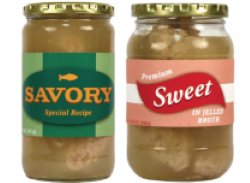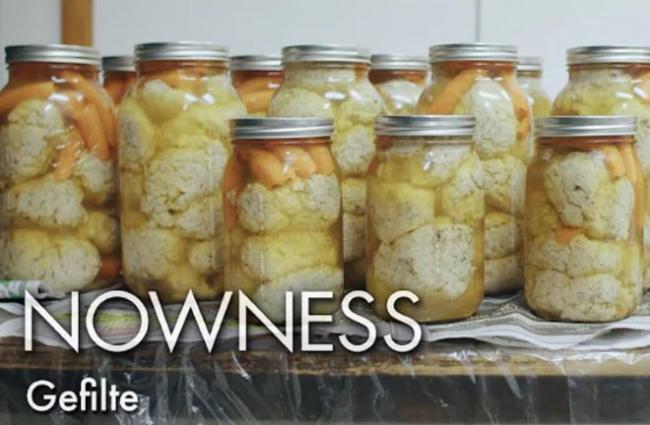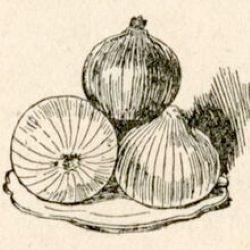Weekly Reader: Passover Food
April 21, 2024
Necessity, they say, is the mother of invention. To put it another way, sometimes constraints spur the greatest creativity. That seems to be true with regard to Passover—and specifically to Passover food. There are no greater dietary restrictions in Judaism than those observed on Passover, when, in addition to the regular laws of kashrut, it’s also forbidden to eat any leavened food. But anyone who has been to a Passover seder can tell you that such restrictions only seem to bring out the best in Jewish cooks. In celebration of the upcoming holiday, which begins tomorrow evening, we’re revisiting this 2022 Weekly Reader which highlighted the many tasty dishes to look forward to throughout peysekh.
—Ezra Glinter, Senior Staff Writer & Editor
Better Stuffed Than Sorry

In the late 1950s, WEVD, the radio station owned by the Jewish Daily Forward, ran an ad for gefilte fish in advance of the upcoming holiday of Passover. In English, the announcer proclaimed, “This holiday, buy gefilte fish in gleaming glass jars, made in the finest tradition of Passover, under strict rabbinical supervision. Delicately light, always right. Gefilte fish in jars.” While the bland gray oval patties swimming in jelly have indeed become something of a tradition—you will still find them on the kosher-for-Passover shelves of your local supermarket in springtime, more than fifty years later—they bear little resemblance to the food item initially described by that name.
Detroit Gefilte City

Each year, the Hermelin family of Detroit comes together to celebrate Passover, and central to their seder meal is the family’s homemade gefilte fish. Now that recipe is the subject of writer and director Rachel Fleit’s latest film, Gefilte. As Fleit notes, “While simple on the surface, Gefilte is filled with history and meaning—just like the recipe itself, which includes a stuffing of fish, salt, vegetables, and egg.”
Listen to an interview with Rachel Fleit
A Seder in the Taiga Translated by Ellen Cassedy

Yenta Mash was born in 1922 and grew up in Zguritse, a small town in the region once known as Bessarabia. In 1941, she and her parents were exiled to a Siberian labor camp, from which she escaped in 1948. “A Seder in the Taiga,” published as “A seyder in der tayge” in her 2007 collection Mit der letster hakofe (The Last Time Around), is the story of a unique Passover meal consumed in the Soviet gulag by a group of women prisoners. Substituting a pine cone for the egg on the seder plate, they rework the traditional ritual to reflect with tart humor on their difficult circumstances.
Everything on Matzo

What do Yiddishists eat on Passover? Turns out, the same thing as the rest of us. In this oral history interview, Gitl Schaechter-Viswanath, Yiddish poet and daughter of linguist Mordkhe Schaechter, describes celebrating Pesach, her favorite holiday, as a child.
A Yiddish Seder
The theme this week might be Passover food, but we wouldn’t be the Yiddish Book Center if we didn’t have a Yiddish book to recommend. In this case, there’s hardly a more appropriate choice than a Yiddish Haggadah. There are a few to choose from, but here’s one with just your basic Hebrew-to-Yiddish translation, first published in New York in 1928.
